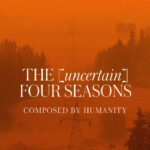Beth Denisch’s music has been performed at Moscow’s Concert Studio of Radio “Kultura,” in Russia, at Jordan Hall in Boston, and Weill Recital Hall at Carnegie Hall in New York, across the U.S., and in Canada, China, Ecuador, Finland, Greece, Japan, and Scotland. Her music receives radio play and tracks are available online; CDs from Albany, Juxtab, Odyssey, and Interval record labels. Scores are published/distributed by Juxtab Music, ClearNote Publications, and TrevCo Music.
“…fierce rhythmic patterns,” Bernard Holland, New York Times
“… brimmed with personality and drive …” Anthony Tommasini, The Boston Globe
“… wonderfully evocative … simply splendid,” David Cleary, New Music Connoisseur
Originally from Baltimore, MD, Beth Denisch earned her Doctor of Musical Arts and Master of Music degrees in Composition from Boston University and Bachelor of Music degree from North Texas State University.
Denisch’s orchestral pieces include Fire Mountain Intermezzo, which was premiered in Moscow, Russia by Chamber Orchestra Kremlin, Misha Rachlevsky, Music Director. FMI was selected as a finalist in the orchestra’s International Blitz-Competition for Composers Homage to Mozart. The orchestra has performed it multiple times, including at Carnegie Hall’s Weill Recital Hall. Another piece, Golden Fanfare, Julius Williams, conductor, was recorded with the Dvorak Symphony Orchestra in Prague (Albany Records, The New American Romanticism).
Chamber commissions include Women: the Power and the Journey for the Equinox Chamber Players with multiple performances in St. Louis and Boston. The CD Jordan and the Dog Woman (Juxtab Records) includes this and other chamber works by Denisch.
Choral commissions include “The Tree House,” commissioned by The Concord Women’s Chorus, Jane Ring Frank, conductor. The chorus selected poems by the Scottish poet Kathleen Jamie who writes about nature and Denisch set these poems for chorus, oboe, cello, and piano. The world premiere is this May by the Concord Women’s Chorus in the US and they will tour the piece with multiple performances in Scotland this summer.
Denisch frequently draws inspiration from nature and art works in other mediums. Her instrumental suite Jordan and the Dog Woman is based on the Jeanette Winterson novel Sexing the Cherry; and the Forth Project, for solo piano, was inspired by the paintings of Mark Forth. The Pennsylvania Academy of Fine Arts and Philadelphia Classical Symphony awarded Denisch for The Singing Tree, inspired by Maxfield Parrish’s painting Princess Parizade Bringing Home the Singing Tree as part of PAFA’s Parrish retrospective and was followed by a commission from PCS for Goblins Night Out! for orchestra and narrator.
Additional awards and grants include ASCAP, Meet The Composer, American Composers Forum, Composers Guild, and the American Music Center. Other commissions include the Handel & Haydn Society for Sorrow & Tenderness for period orchestra and chorus, the PianOVo Trio (Weimar, Germany) for Suite for Israel, the Boston Composers String Quartet for Phantasmagoria, and the Cambridge Madrigal Singers for Constantly Risking Absurdity.
Denisch is Professor at Berklee College of Music and has taught at Boston University, Northeastern University, and the University of Massachusetts. She is a member of the International Alliance of Women in Music; an ASCAP composer and publisher member; and was the founding director of the American Composers Forum New England.
Read more about Beth Denisch on Wikipedia



